RR haiku 006
in a good mood
for no particular reason
just because
The following conversation was re-published from the book Spheres by Swiss graphic designer Philippe Karrer. Jürg Lehni and I discuss our shared interest in vector graphics, which are based on mathematically-defined geometrical entities such as lines, circles, and points, in contrast with more commonly used bitmap graphics, in which values are assigned to grids of pixels.
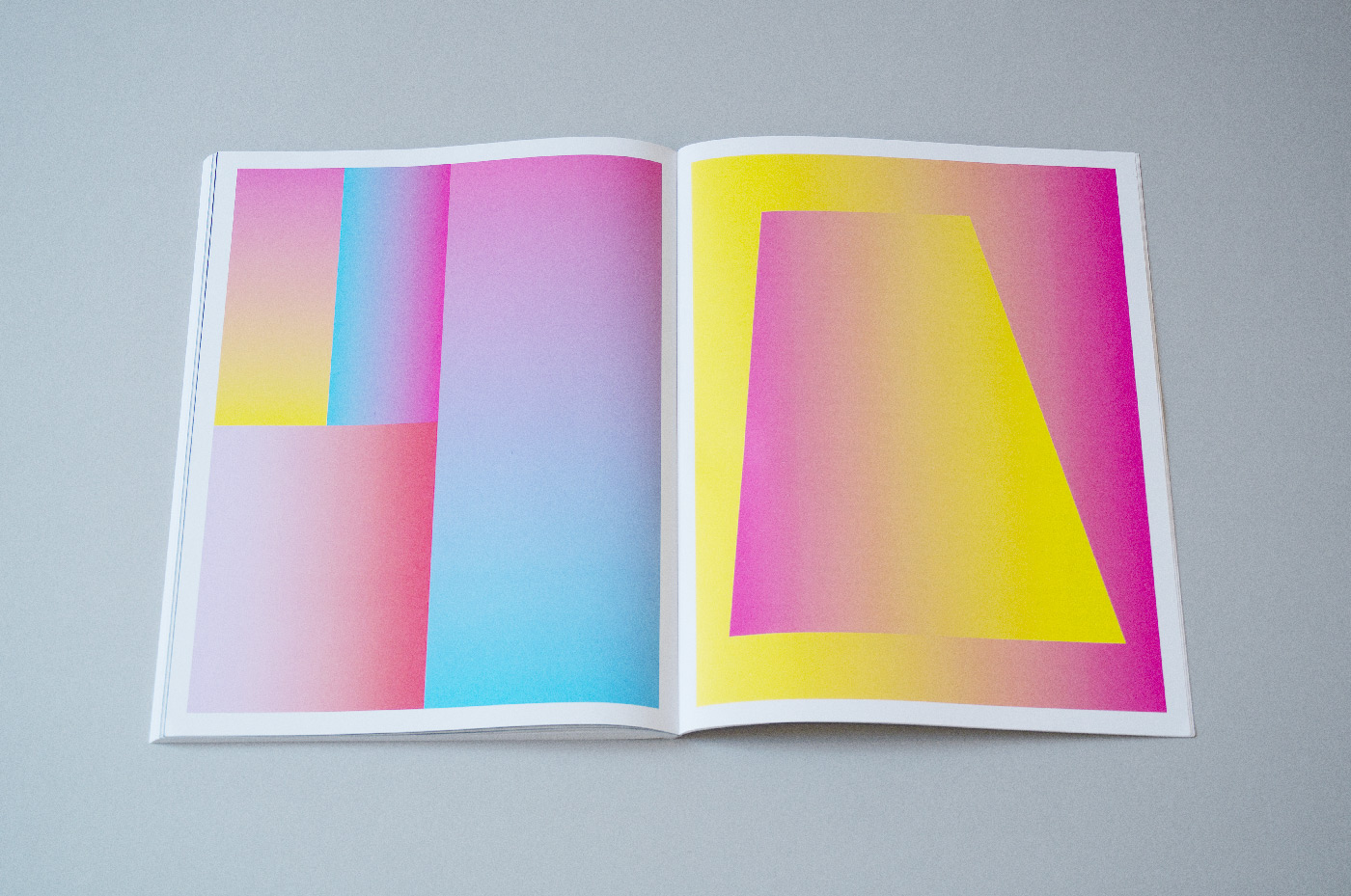
Rafaël Rozendaal: Vectors are based on mathematical equations. The equations are perfect. No matter how we try, we can never render a perfect circle in any medium. And even if we did, our imperfect eyes would not be able to register its perfection. Do we have to accept that such shapes can only exist in our mind?
Jürg Lehni: What a start of a conversation! This distinction between the abstract mathematical formulation of geometric shapes, and their realization into concrete, physical forms is pretty much at the core of my fascination (or shall I say obsession?) with vector graphics. The shift is always there, whether it is illuminated pixels being turned on or off, a mark-making tool being moved by motors, or a laser beam being guided by electronically-moved mirrors, burning a line permanently into a physical surface. What it boils down to is the difference between the abstract idea behind something on one hand, and its concrete form when it becomes reality. Plato’s theory of forms comes to mind, with its ideal or archetypal forms that stand behind and define the concrete, physical things.
Last night I watched this while high, and fuck this guy. Creating
shitty flash animations with abstract colors, and doing the the whole
“It’s an empty room.” artwork bullshit. Again, fuck this guy.
please stop and go get a job. you are annoying.
fuck this asshole This guy can hardly explain his own ideas.
He’s honest. Lazy art… i want to do that
what a load of fucking shite
what the fuck. how does he make a living off that??
What a joke. My buddys toddler has more artistic talent. I sincerely
hope people dont support this pathetic excuse for an “artist”.
shitty haircut
solipsism
what a waste of both resources and time I just took a shit. Is that art?
It is sad that this is considered “art”.
Completely useless What a fucking idiot this guy is cool. i like his stuff.
artsy fartsy unemployed-ey
These arty types all talk in riddles.
This guy has smoked himself retarded
Wtf stunning
If this is your life…then YOUR LIFE IS SHIT!!!!
This comment is art.
its beautiful I walk into public farting in peoples faces. It’s art!
cool story bro, tell it again
i think this is really cool.
If I was high I might enjoy his work, but unfortunately I am sober and
can say with a clear mind that this is complete bull shit
suck a bag of dicks
2deep4you…. but no seriously i agree.
so this faggot gets paid to make fart noise? FUCK THE WORLD
video tittle should be “how to make money by selling internet trolling”
This is so edgy.
Do you even art, bro?
Yes, in fact, I just arted in the bathroom 5 minutes ago.
Modern Matter is a magazine focusing on art & fashion.
In this issue a number of artists (Maurizio Cattelan, Bjarne Melgaard, me, …) are interviewed,
talking about what it is like to live and work in New York.
Photos by Phillipe Gerlach.
Composition: the arrangement of elements in time and space.
The browser is very different from other media, especially when it comes to composition. I believe we are at the very beginning of the aesthetic potential of the networked image.
This is an (incomplete) list of compositional characteristics of the browser.
The internet presents artists with challenges, opportunities, and best of all, a lack of history.
The size of a browser can change at any moment. There is no fixed dimension or ratio. Think of an image, that can shrink or expand at any time. Ideally the artwork anticipates every possible dimension. Colors are rendered differently depending on hardware, software and usage. Websites are ubique yet inconsistent in appearance.
There are many kinds of devices. Some have big pixels, some have small pixels. A 1 pixel line on a smartphone is different from a 1 pixel line on an old CRT monitor. The physical experience of each device is unique.
The user is present in the pictorial space. There might be a cursor or finger that can influence the composition. Interaction is not unique to the browser but it is something that is natural to internet users.
Many people at the same time can influence an image. There is a potential for social images that change over time by allowing users to modify an image, like a wikipedia article.
Computers are good at generating random numbers. I’m not sure if those numbers are truly random, but it’s good enough. Each time the artwork is viewed, it can be slightly or dramatically different.
The networked image can keep pulling information from the web. The elements of composition can change all the time, because the web’s content changes all the time.
In the early days of the internet, bandwidth was very limited. This digital frugality created a new visual language.
Browsers do not have the same rendering power as native applications. This is a limitation and an opportunity at the same time. Challenges like these force artists to come up with new solutions.
I work a lot with geometrical images. They are shapes based on mathematical instructions.
You can write down the equation of the circle, and imagine the circle in your mind. In your mind, the circle is absolutely perfect. It is absolutely round.
Unfortunately there is no screen, printer, or natural phenomenon that can render a perfect circle. There will always be some particles bouncing out of place. And even if we did somehow manage to create perfection for a brief moment, our imperfect eyes would not be able to perceive it. Our eyes show us a distorted image that our mind corrects.
Geometrical images are conceptual images, they only really exist in our mind.
Back in 2004 I moved to Los Angeles. I shared a studio with Jonathan Maghen and we started a T-shirt line called Tagbanger.
As artists, we were most excited about creating images. It was a nice form of collaboration, we both created and found images and then we would sit together and review the ideas. Sometimes we would execute the ideas together, sometimes separately. We found a great printer who used waterbased inks, we found a great T-shirt manufacturer, and we had nice labels made.
What we underestimated is that a business requires a lot more than just creating a product.
I tried going to stores to offer them our shirts but I would just feel awkward. And the logistics were not easy either.
We sold quite a few shirts but it never became a big thing that we could do fulltime. I really admire artists who are able to create a business of consumer oriented art products. In simple words: affordable art that anyone can buy.
Below are all the T-shirts we made. It was great fun and we made some money, and I learned a lot.
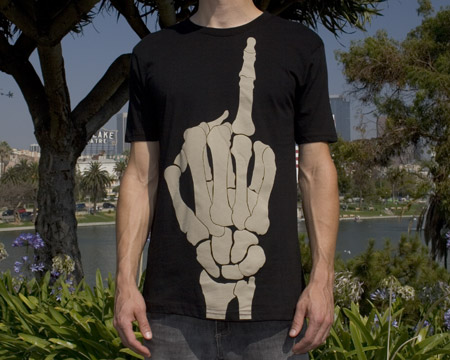
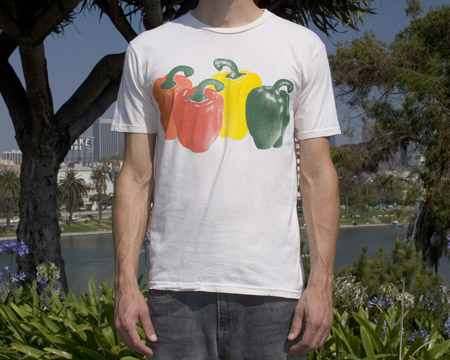
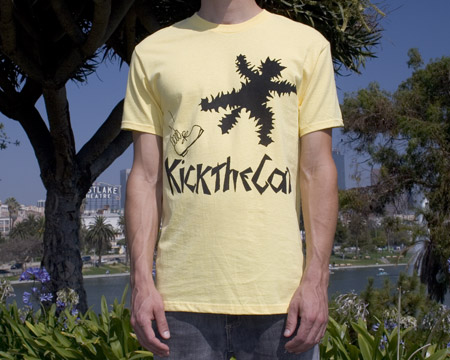
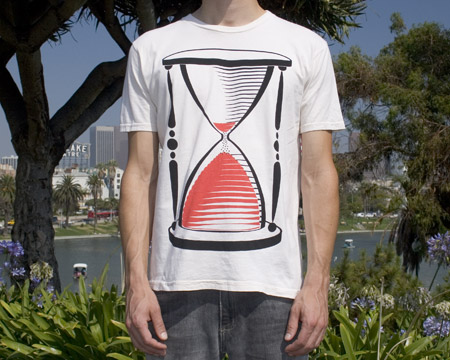
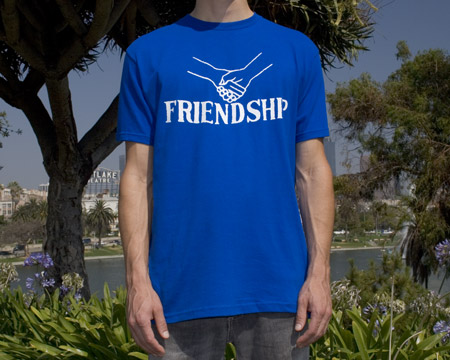
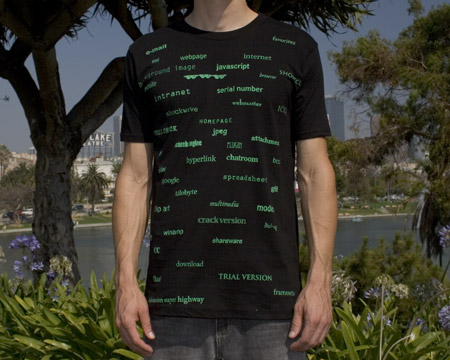
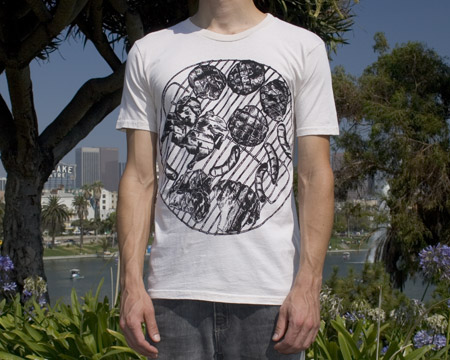
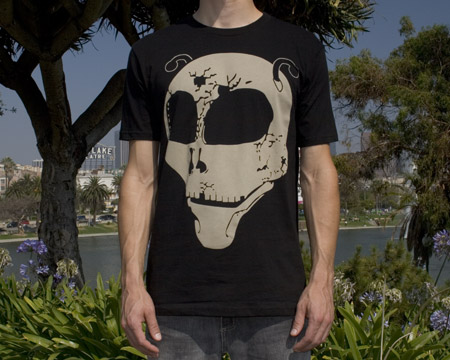
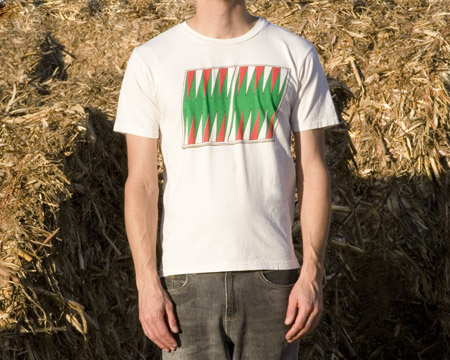
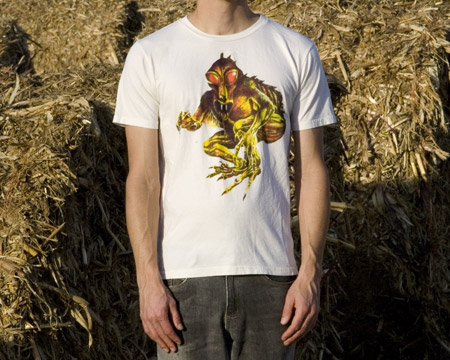
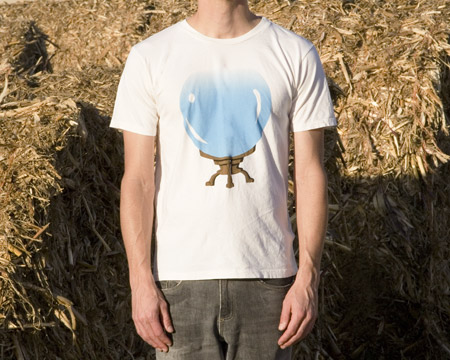
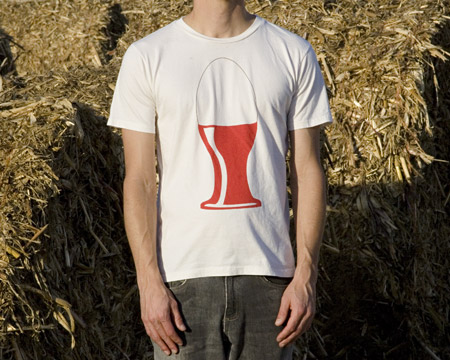
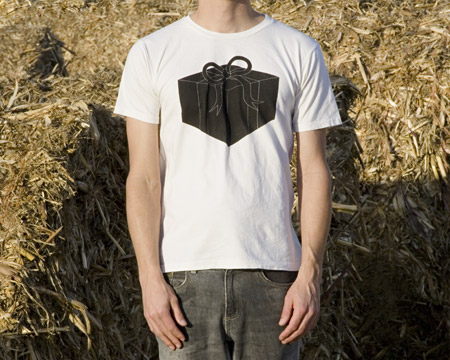
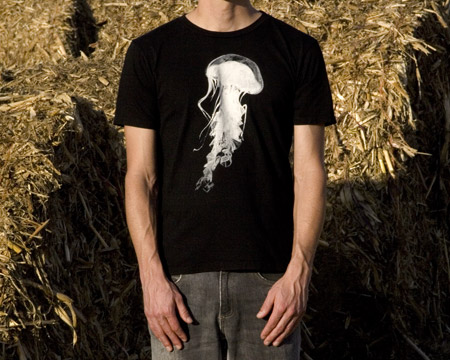
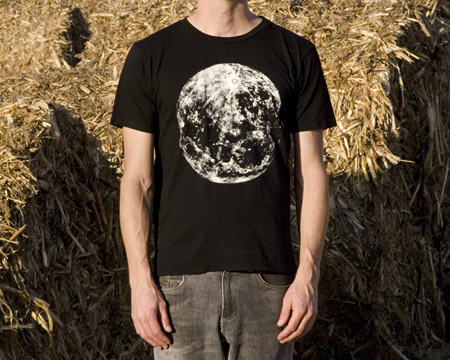
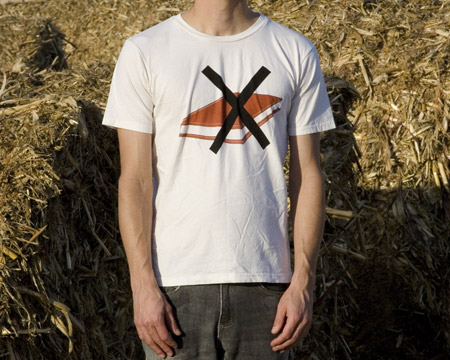
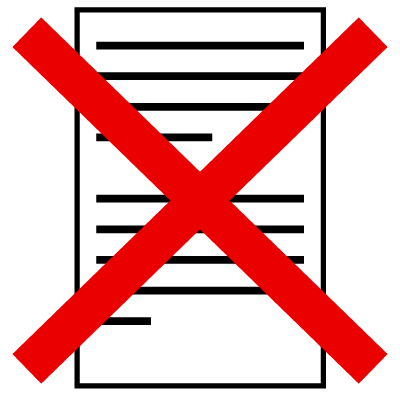
Brand New: Text Free Browsing, a chrome extension by Rafaël Rozendaal & Jonas Lund.
Text Free Browsing does what the name says: once you install it, you can click on a little nerdy face to turn off all text on the internet. You can turn TextFree on and off on at any moment. Try it!
You can download it for free in the Chrome Web Store
Hi @yyolk,
My coding knowledge is tiny. Smaller than a pimple on a fruitfly.
I remember trying to code in 2000/2001. I could play a bit with framesets in html, and “gotoFrame” in Flash. But then it just felt like there was a wall I had to learn to climb. I just wasn’t motivated, or I don’t have the talent. Probably a bit of both.
I don’t know css, I know maybe 3 tags in html, and I know how to do “goto random frame” in Flash. That is my total knowledge of coding.
I remember seeing a discussion at the New Museum, about the question “should everyone know how to code”? After all, our world is more and more digital so not knowing how to code is like being illiterate?
I don’t know if I would make better work if I was coding it myself. I was very lucky to meet nice people who’ve helped me, in particular Reinier Feijen. He is very friendly and patient and he enjoys the process of solving visual puzzles.
I do know that I’m running out of time as is, so it’s good for me to work together with people.
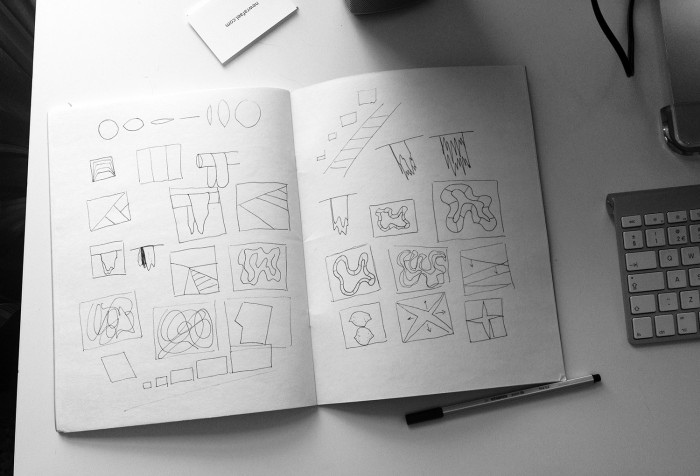
I love finding ideas, so I try to find methods to push myself… more ideas, better ideas, whatever that means.
I like using a sketchbook to get ideas out of my head. Usually sketching helps, so now I made a deal with myself: every day, for at least an hour, I have sit somewhere without internet and sketch for an hour.
So far it has helped a bit, but it is also very daunting. After all, this is the era of self publishing. You don’t need a movie studio to make a film, you don’t need a publisher to share your novel with the world. Just put it on the internet.
The tools are cheaper and easier every day, and the only limit is your own motivation and talent.
This is great, but is also very intimidating.
When I sit and I have a pen in my hand but there are no ideas, it’s not a great feeling.
When the ideas do come, it makes me happy.
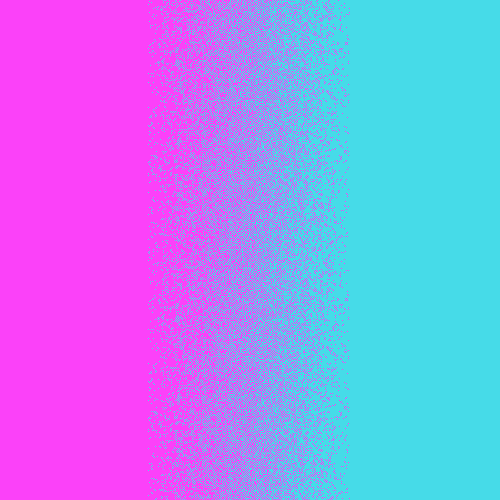
Over the next two months I will be releasing one animated .gif per week as an online project for AND festival. This is the first one.
Abandon Normal Devices (AND) is an energetic regional festival of new cinema, digital culture and art in Liverpool.
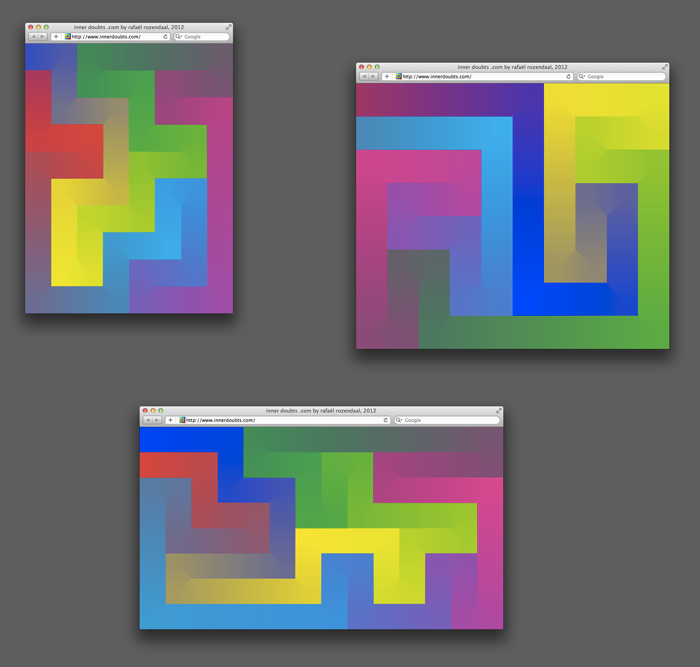
According to Wikipedia:
“Composition is the placement or arrangement of visual elements or ingredients in a work of art.”
Works of art usually have a fixed size. The artist will carefully position all the elements until a perfect tension is found.
What if the medium does not have a fixed size? How do you deal with composition?
Everybody uses their browser in their own way. Websites are viewed in various dimensions. This is an interesting moment for artists. Composition has been exhausted, many artists in many media have explored all the options, leaving little room for invention. But now you can make art objects (websites) that adapt.
A good website acts like gas, using all available space.
I’ve always tried to make websites that work any way you want them to, small, large, square, tall, flat. Some of my websites stretch, some scale, some crop, and some rearrange according to your browser size.
My approach (vector based generative images) is one possibility, but I think there are many ways to deal with composing images for a browser. Art historians of the world, please be alert, there are probably a lot of artists right now inventing ways to deal with “the liquid canvas”.
eat more vegetables
eat less meat
make more money
work on my posture
spend more time in nature
have a political opinion
give to charity
fix my parent’s computers
not worry
I was invited by curator by Lauren Cornell and the New Museum to show a selection of my websites on Seoul Square, the world’s largest LED screen, measuring an impressive 80 x 100 meters. The event happened on May 24, 2012 and was produced by Calvin Klein.
I always thought moving images are very versatile. They are energy based, not atom based, just like music. You can listen to a song at home, while you run, in a club, or in a huge stadium.
It doesn’t change the song, it does change the experience.
Works shown on Seoul Square:
Much Better Than This .com (Collection of Almar & Margot van der Krogt)
Falling Falling .com
Like This Forever .com (Collection of Allen & Overy)
Towards and Beyond.com
Music by Cold Void (Rafaël Rozendaal & Luuk Bouwman)
A big thank you to everyone involved…

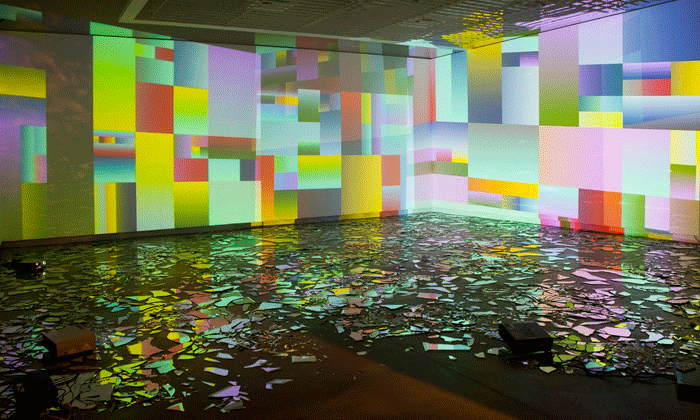
Installation by Rafaël Rozendaal
Mirrors, computers, projectors.
Museu Imagem e Sol, Sao Paulo, 2012
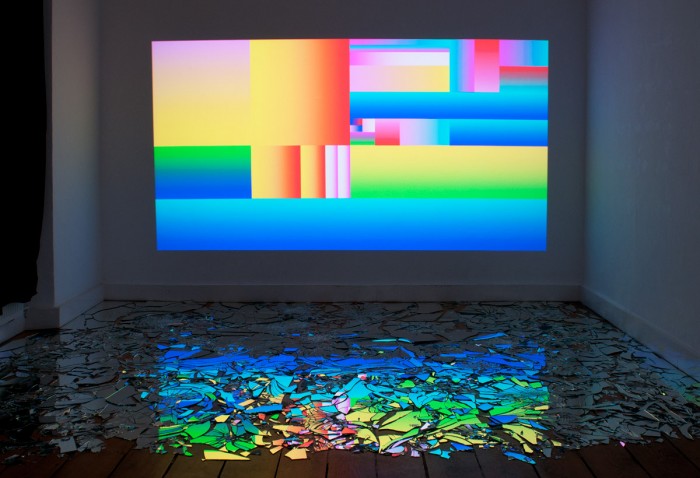
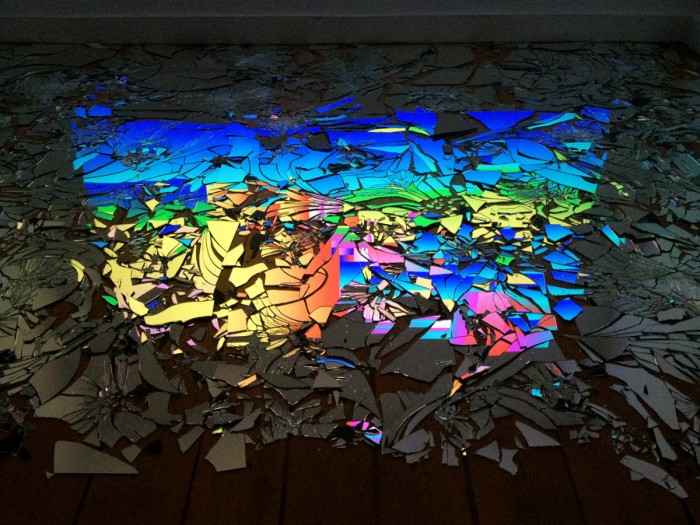
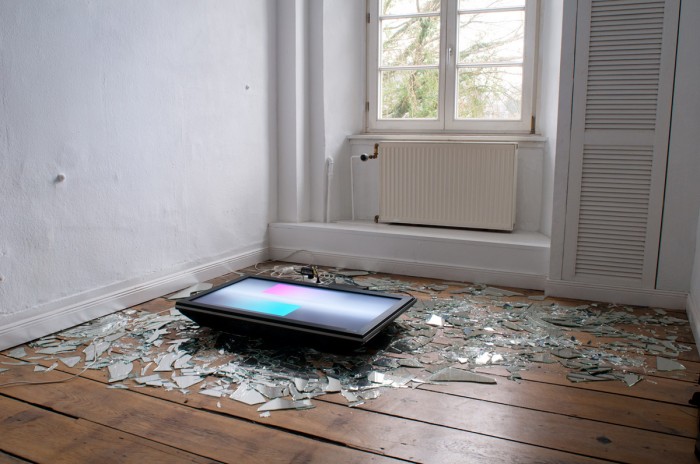
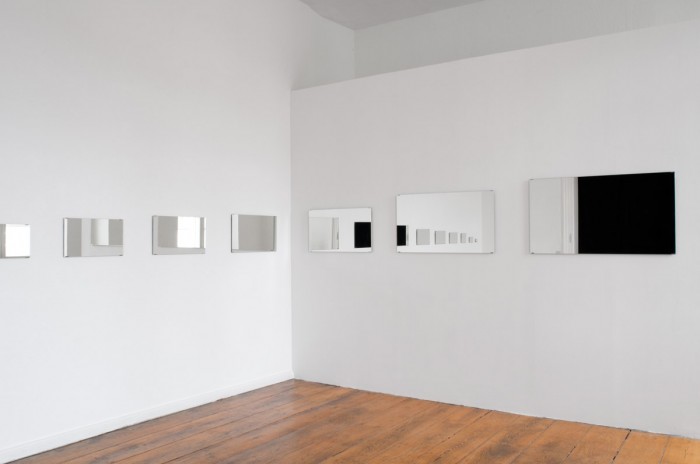
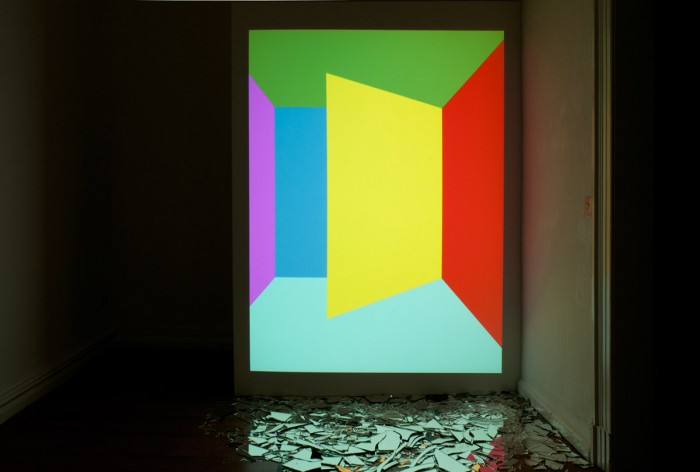
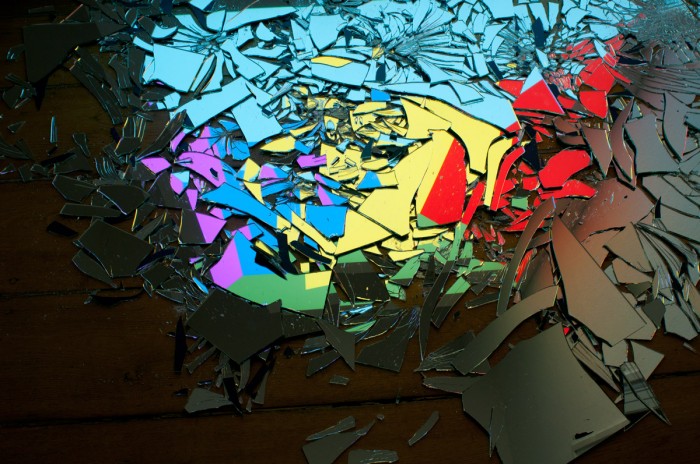
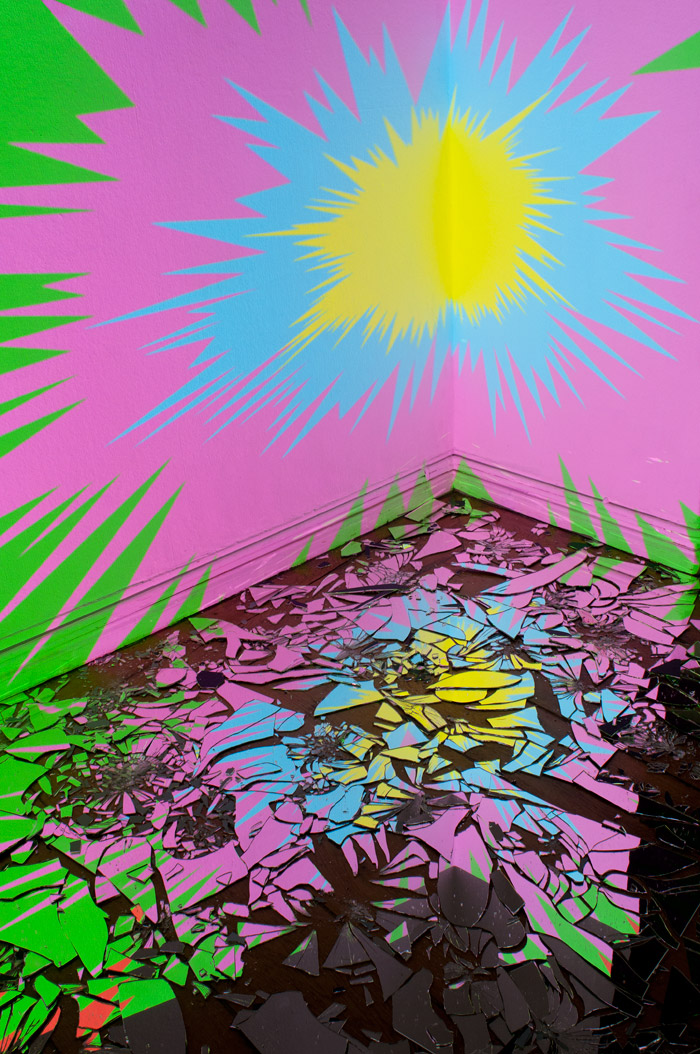
“Everything Dies”
Exhibition by Rafaël Rozendaal at Kunstverein Arnsberg,
curated by Vlado Velkov, April 2012.
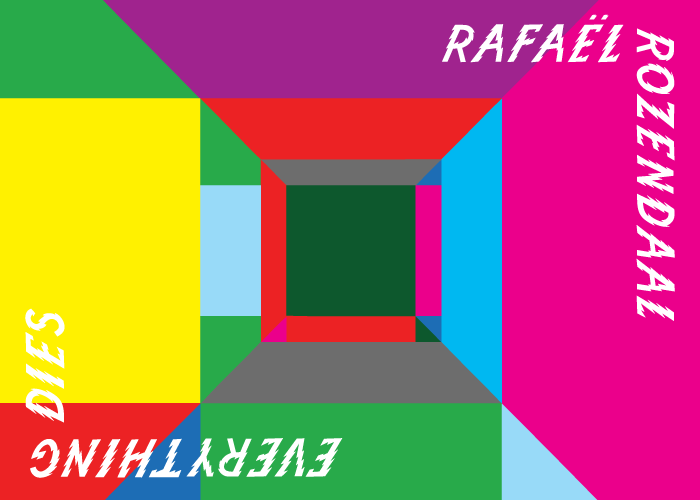
This Friday my exhibition “Everything Dies” opens at Kunstverein Arnsberg in Germany.
There will be mirrors, there will be projectors, and I will be there too.
Opening: Friday, March 30, 19:00h
Exhibition: March 30 – May 20
Kunstverein Arnsberg
Königstraße 24, Arnsberg, Deutschland
Sponsoren: RWE, Carl-Jürgen Schroth, Marianne Cramer, Stadt Arnsberg, Interprint GmbH, Sparkasse Arnsberg-Sundern. Freundeskreis: Dieter Henrici, Berlet-Elektrofachmarkt, Menke Gebäudereinigung, Gebro Haustechnik, Wesco, Zakowski Generalplanung.
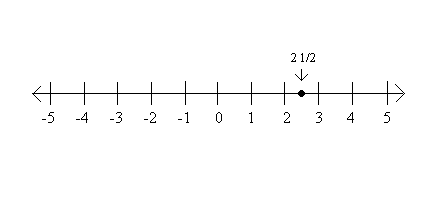
What was the art that captured the spirit of the industrial age?
What will be the art that captures the spirit of the information age?
Should art capture things, freeze them?
A lot of art freezes reality, it makes time stand still so we can have a better look.
Can today’s time still be frozen? Or are things moving too fast?
Or perhaps things are not even moving that fast? Is today that different from 10 years ago?
classic subjects in new formats
new subjects in classic formats
new subjects in new formats
classic subjects in classic formats
click on images for larger view
In and Out,
installation by Rafaël Rozendaal
at Tetem, Enschede, January 2012.
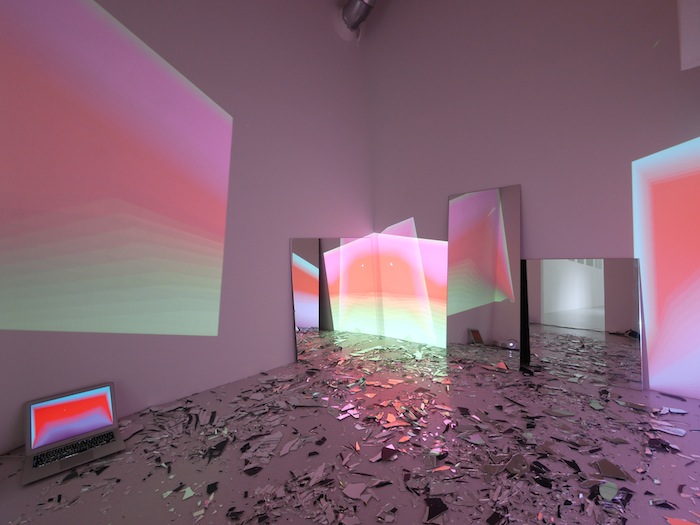

Falling Falling with mirrors
installation by Rafaël Rozendaal
at Nordin Gallery Stockholm, November 2011.
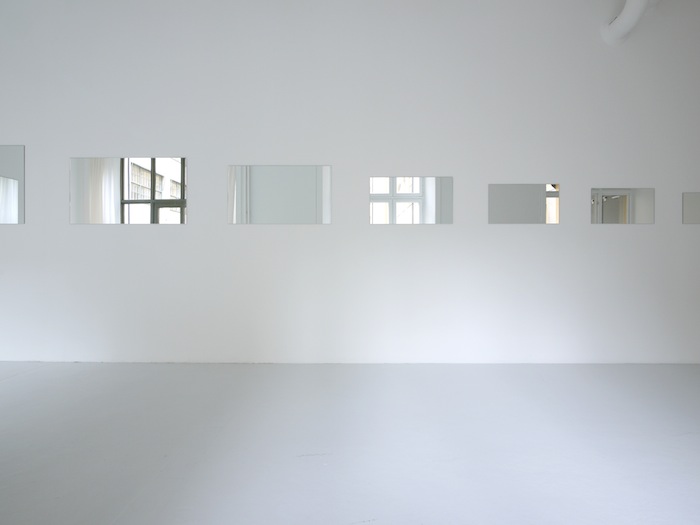
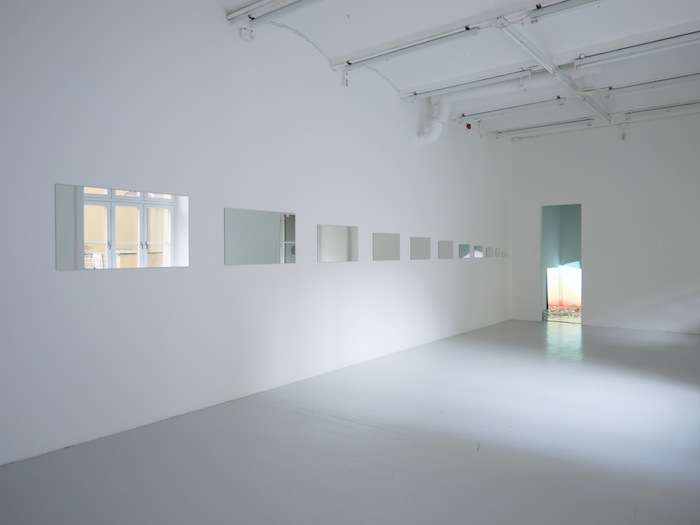
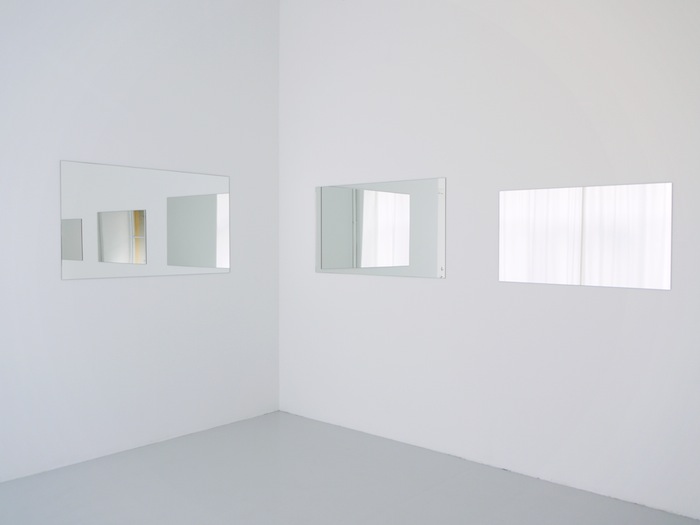
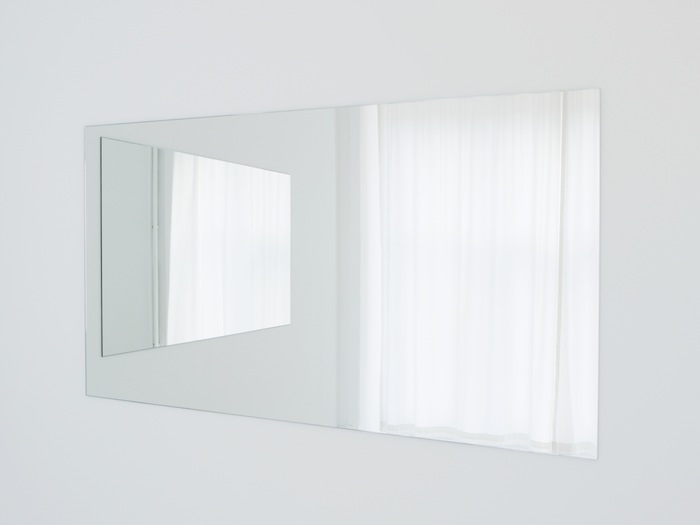
Popular Screen Sizes (60″, 55″, 46″, 40″, 32″, 27″, 24″, 21″, 17″, 15″, 13″, 10″, 7″, 3.5″)
installation by Rafaël Rozendaal
at Nordin Gallery Stockholm, November 2011.
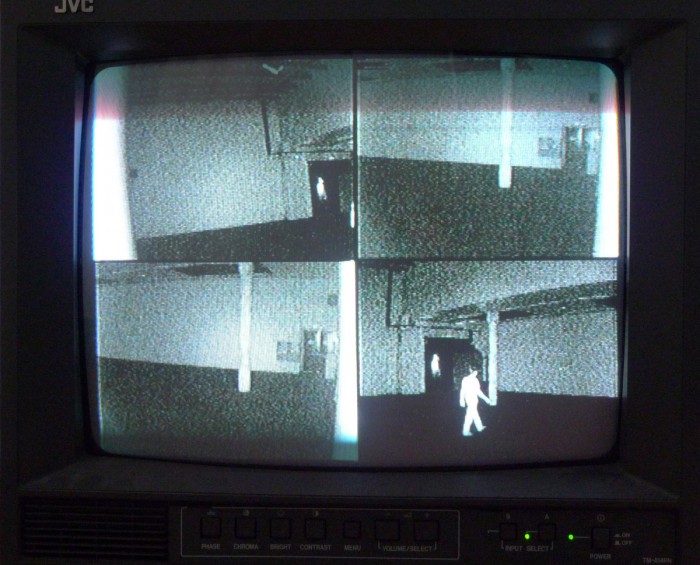
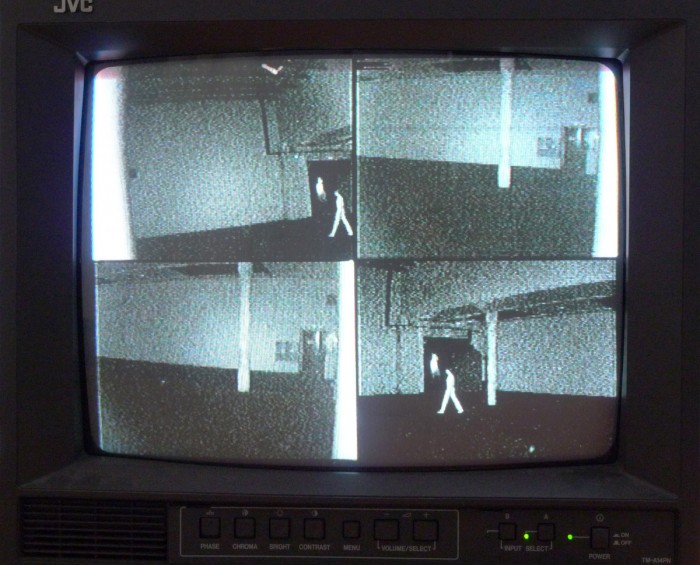
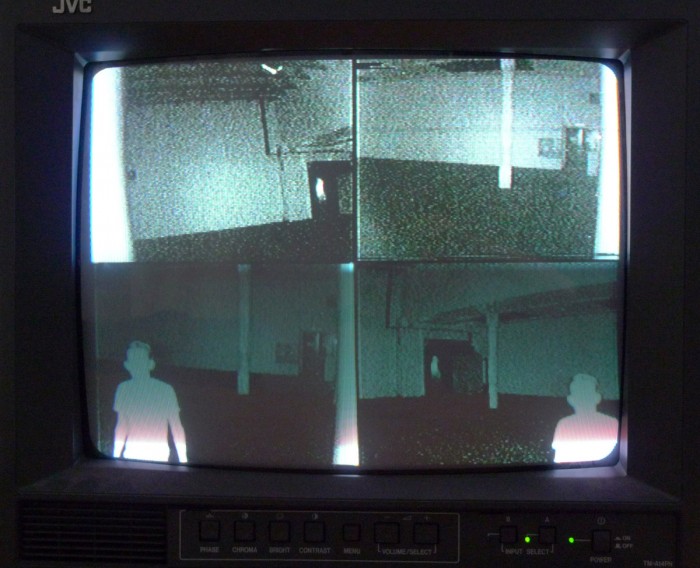
“The Shift”, solo show at W139 Amsterdam.
Visitor moves: sound of a mosquito
Visitor doesn’t move: silence
Open till 9th of September 2011.
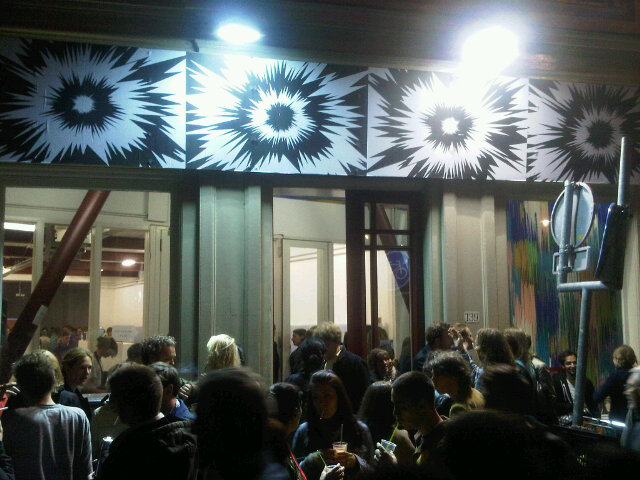
Thank you everyone who came out to see the show yesterday!
Photo by René Andreasi Bassi.
Art Website Sales Contract is a document that I use to sell my websites.
It can be used by anyone who wants to buy or sell an art-piece-in-a-domain-name.
BYOB is a series of one-night-exhibitions inviting artists to ring their own projecting equipment. This one happened on November 12, 2010 at Spencer Brownstone Gallery in New York.
Curated by Rafaël Rozendaal, participating artists: Agnes Bolt, Artie Vierkant, Billy Rennekamp, Britta Thie, Brian Close, Calla Henkel & Max Pitegoff, Charles Broskoski, Damon Zucconi, Duncan Malashock, Daniel Chew, Dena Yago, Hayley Silverman, Jeremy Bailey, Jesse England, Joel Holmberg, John Michael Boling, Joyce Jordan, Kari Altmann, Krist Wood, Mai Ueda, Marlous Borm, Michelle Ceja, Mike Ruiz, Rene Abythe, Riley Harmon, Ryder Ripps, Sarah Weis & Arturo Cubacub, Tom Moody, Travess Smalley, Travis Hallenbeck, Wojciech Kosma.